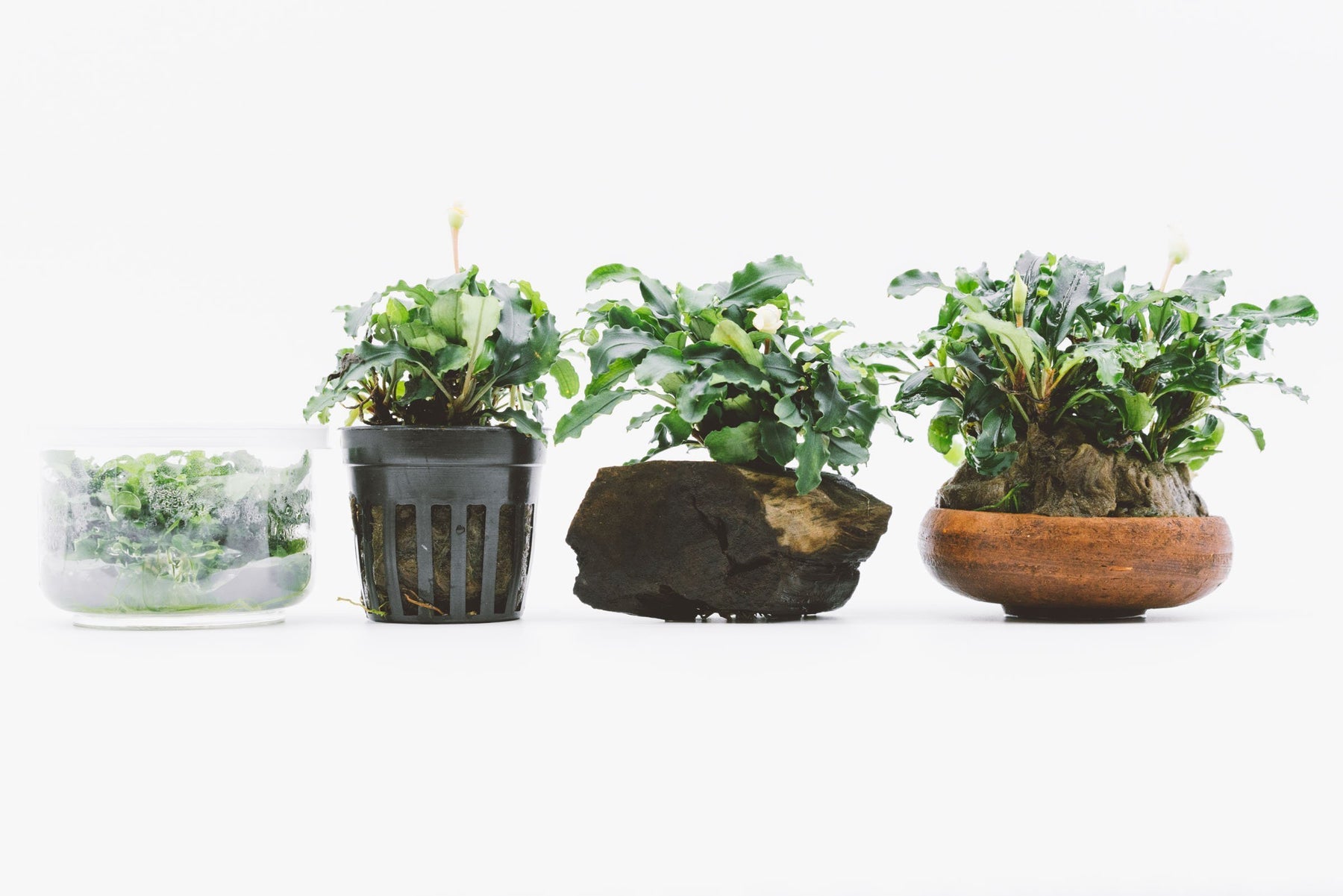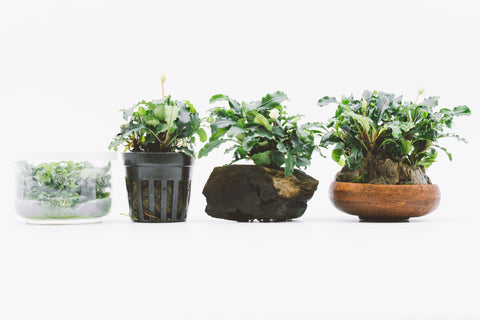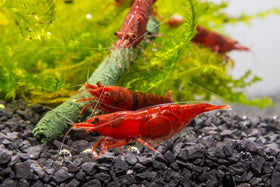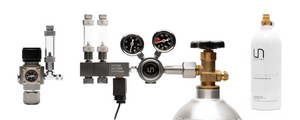
Aquatic Plant Variants! Bucephalandra Green Wavy
Aquatic plant variants: There are so many ways to use aquatic plants in a planted tank. Some are planted directly into aquarium substrate, some are glued or tied to hardscape and some are simply stuffed into the cracks and crevices of aquarium driftwood or stones. What method works best will generally vary depending on the aquatic plant itself. Aquatic plants such as epiphytes have rhizomes that allow these plants to be stuffed, tied and used in nonconventional ways as they are able to grow properly without being rooted to the soil, ultimately allowing one to express their creativity with plant placement.
We're Buce Plant, so obviously we wanted to showcase this using an all-time favorite and classic Bucephalandra species: Green Wavy. Already known for its easy care and green ruffled leaves, Buce Green Wavy is a great example of plant variants. Because this Buce Green Wavy is so versatile, it's available in a number of different ways that will cater to a variety of different planted tank styles, preferences and more.

Pictured from left to right are the following:
- Bucephalandra Green Wavy in tissue culture form.
- Bucephalandra Green Wavy in Pot form.
- Bucephalandra Green Wavy attached to aquarium driftwood.
- Bucephalandra Green Wavy grown in a terracotta pot.
Let's talk about the different types a little more in depth.
Bucephalandra Green Wavy - Tissue Culture
Tissue culture is a great choice for those looking to start or add to a planted aquarium, aquatic plants that are free from pests, snails, and disease. Tissue culture plants are lab grown and contain baby plants. These are ready to add to an aquarium and quick to prepare as all the user needs to do is simply wash the gel substance from the roots and it's ready for planting. While tissue culture is great, it may be a bit trickier for novice hobbyists to handle due to these plants being grown emersed. Being grown emersed, once plants are submerged in an aquarium, they will transition to their submerged form. If overall tank conditions are not optimal, those who aren't familiar with this process might believe the plant is dying off. If the tank is in good condition and suitable for the tissue culture plant species being used, the submerged form will grow out quicker than the emersed leaves die off - meaning, the transition is smooth and seldom noticeable.
Bucephalandra Green Wavy - Potted
Potted aquatic plants are classic. Most aquatic plants are available in this form. Plant safe material is wrapped around fragile roots and placed into mini pots. This form makes it extremely easy for fish stores to display and store plants! Typically before using the aquatic plant, the user should take it out of the pot and remove as much of the wool as possible before planting into an aquarium. These aquatic plants are generally kept submerged making the transition to another aquarium much easier on the aquatic plant. As long as the tank conditions are good, the plants are much more likely to thrive and be just fine!
Bucephalandra Green Wavy - Aquarium Drift Wood
Aquatic plants that are attached to any type of hardscape material such as stones or aquarium driftwood are typically epiphytes such as Bucephalandra or Anubias. Aquatic plants such as mosses and ferns are also pretty readily available in this form as well. When using this form, it's extremely easy and most aquatic plants are ready to plop into a planted aquarium to the user's preference.
Bucephalandra Green Wavy - Terra Cotta Pot
With a newer approach, this example is not as common but is popular in its own right. Terra Cotta pots are a great and common material used for aquatic purposes as well as terrestrial purposes. This variant boasts a large amount of Bucephalandra and is a great ornamental piece to use in a planted tank. This would work great in a shrimp tank!
While there are many more variants, we wanted to cover some of the most popular types. Ways to plant and use aquatic plants are endless and we hope this inspires you to get a little creative with your next planted tank project. Good luck!
PS. If you haven't seen the video yet, here it is! Let us know what topic we should cover next.
Tell us - Was this article helpful? Please leave a comment below!
If you have any questions regarding this article, please DM us on Instagram, Facebook, or email support@buceplant.com so we can assist you - @buceplant





Leave a comment